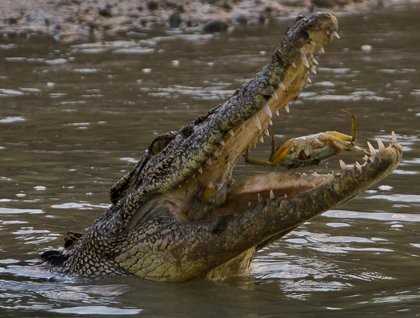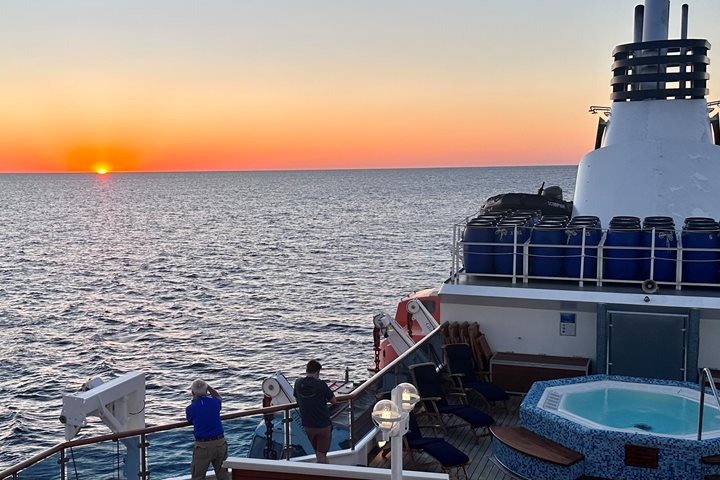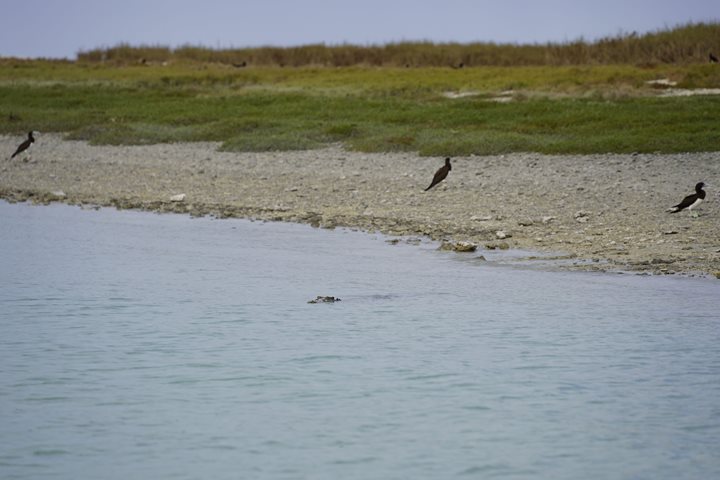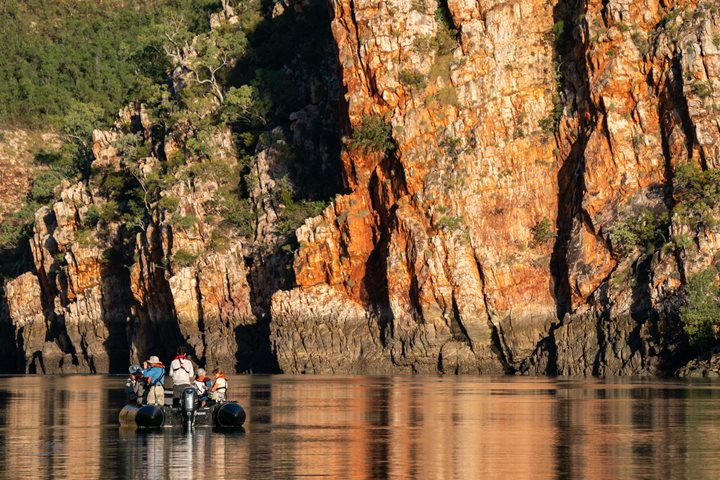Arriving at our anchorage in Prince Frederick Harbour at 6:30 a.m., we rose to the day with an air of anticipation, as we were to explore the Mitchell Plateau by helicopter and navigate the crocodile-abundant Hunter River by Zodiac. These are two of the best means of exploration around this region as the mostly inaccessible national park spans 115,300 hectares. The Mitchell Plateau is a culturally and spiritually significant region for the Wunambal people, who have lived here for thousands of years. This can be seen today through the rich and ancient Wandjina art found in the area.
Those who threw caution into the wind via jumping in a doorless helicopter soon found themselves getting a white-bellied sea eagles-view of York Sound’s turquoise bays and snaking inlets, rusty sandstone cliffs and outcrops, as well as witnessing marine fauna such as giant loggerhead turtles as they surfaced for air. After alighting the chopper onto Mitchell Plateau, a brief walk around the rugged landscape revealed the full majesty of the Mitchell falls - an immense, four-tiered, surging cascade. A refreshing dip in the plateau’s crystal clear (and crocodile free!) pools was enjoyed before returning to National Geographic Orion for lunch.
The afternoon offered a fantastic opportunity for all to witness saltwater crocodiles (crocodylus porosus) feeding along the banks of the Hunter River at low tide. Numerous crocodiles were spotted feeding on mud crabs, mullet, and catfish, which allowed everyone to capture some thrilling action.
Saltwater (also known as Indo-Pacific and Estuarine,) crocodiles are the largest living reptile on earth, in rare cases reaching over 6 metres in length (males usually averaging 4.5-5.5m, females 2-3m). They can weigh over 1000 kilograms (220lb) and have the potential to live in excess of 70 years. A true evolutionary success, the saltwater crocodile has remained relatively unchanged for the last 98 million years. Some evolutionary adaptations include teeth that are replaced continuously throughout their lifespan and a third (nictitating) eyelid that protects the eye whilst feeding. A usual diet consists of frogs and insects, crustaceans, birds, and small mammals, however an adult saltie is also quite capable of overpowering and consuming large prey such as turtles, kangaroos, and buffalo.
Once hunted extensively in Australia, (95% of population decimated until protection status in 1971) their numbers have now recovered and are abundant throughout the Kimberly region. Latest research estimates Australian crocodile populations in the wild to be between 100,000-200,000. This is an efficient, stealthy apex predator of the riparian ecosystem and as such deserves a healthy amount of respect from those traveling throughout the Kimberley’s!
So, after witnessing this remarkable feeding event, everyone was in dire need of ice creams. Thoughtfully, our delightful hotel crew had pre-empted this, and from a strategically placed Zodiac, we were provided with icy refreshments that were promptly devoured on our way back to National Geographic Orion whilst viewing yet another incredible Kimberley setting sun.







